During the first seminar on Design for interaction and fabrication, we explored 3 different manufacturing techniques: we started with Laser cutting for the project @mazing 4.0 designed during the Internet of buildings studio and adopted CNC milling and 3D printing, highlighted with a video mapping projection for the project Eskurtze Parkea developed during computational urban design II.
PROJECT 1 | @MAZING 4.0
The study chosen from this project is the proximity analysis of the identified social hubs and the blocks with public courtyards in Barcelona, emphasizing two types of connections: direct continuous lines and indirect hatched ones.
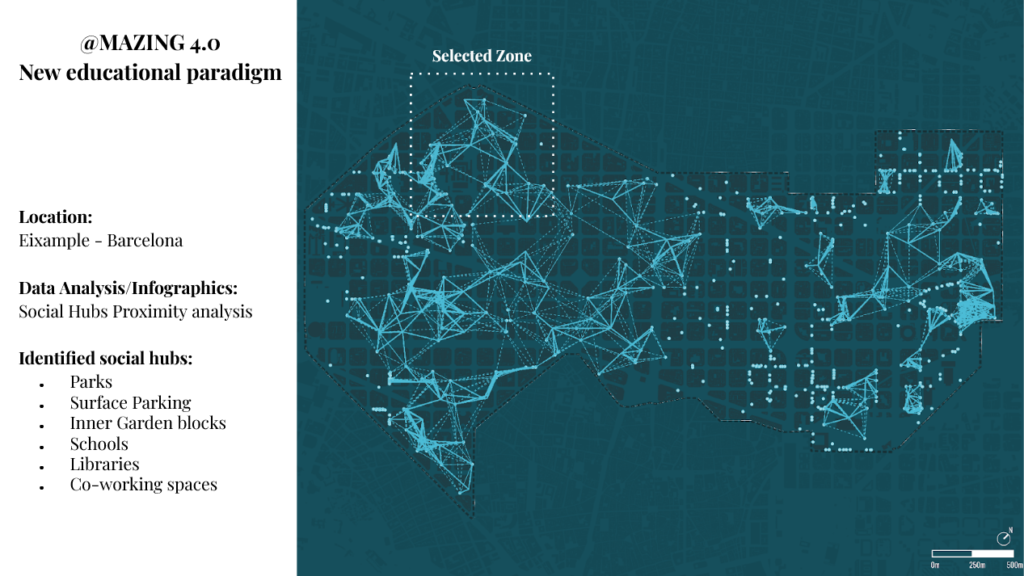
TECHNIQUE | LASER CUTTING
The purpose of this exercise was to construct several data layers on TRANSPARENT ACRYLIC using a variety of engraving, marking, and cutting techniques. These layers were presented in an MDF box with led stripes that made it possible to adjust the layer illumination.
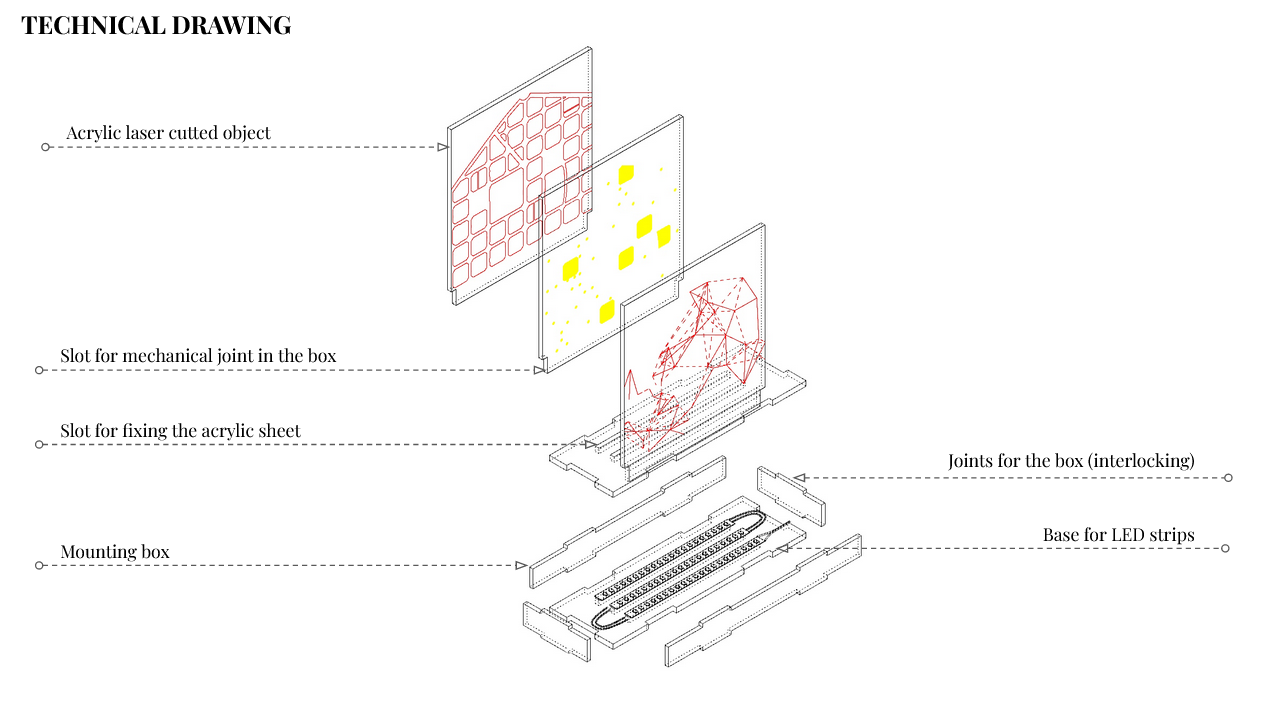
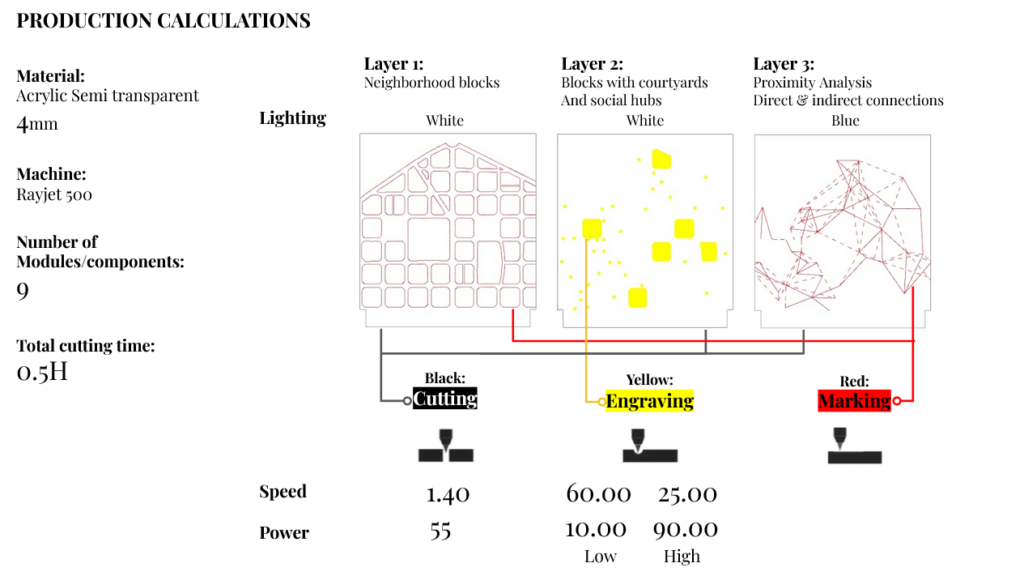

PROJECT 2 | ESKURTZE PARKEA
Project 2 of the Eskurtze Parkea was chosen due to its interesting terrain, complex project, and computational analysis and simulations, which makes it adequate to investigate the newly learned techniques from CNC milling and 3D printing to video mapping.

TECHNIQUE 1 | CNC MILLING
The goal of this exercise was to investigate CNC’s possibilities. This investigation was conducted in a region with significant topographic changes and infrastructure position in order to get the most out of it. The TERRAIN, the BUILDINGS, and the HIGHWAY INTERCHANGE were the data points selected for representation.
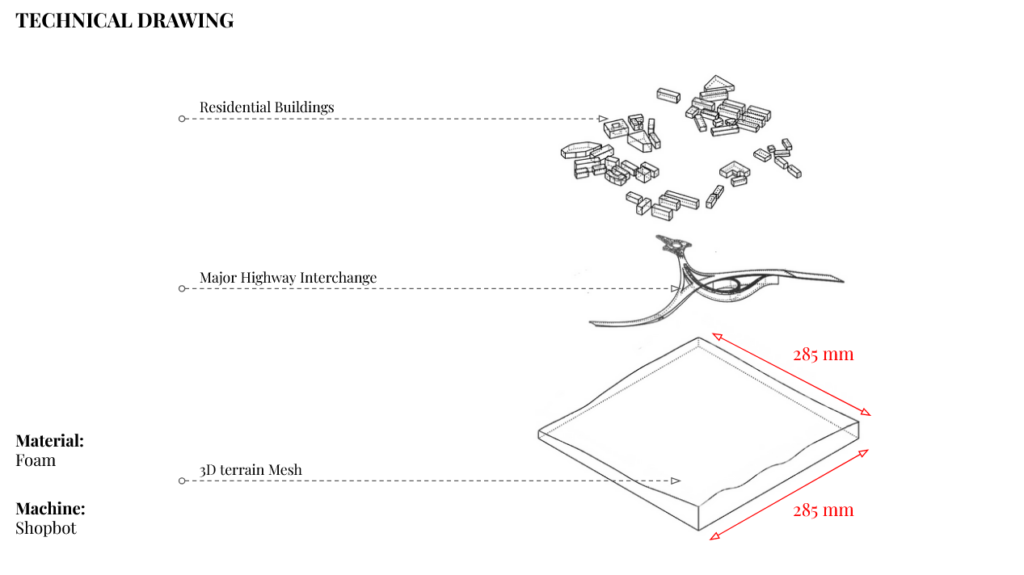
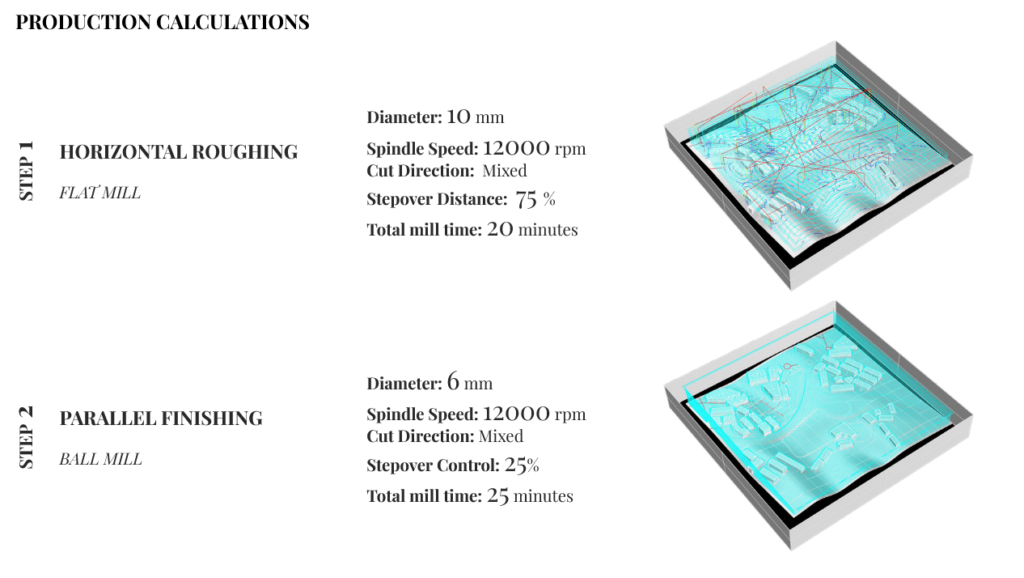
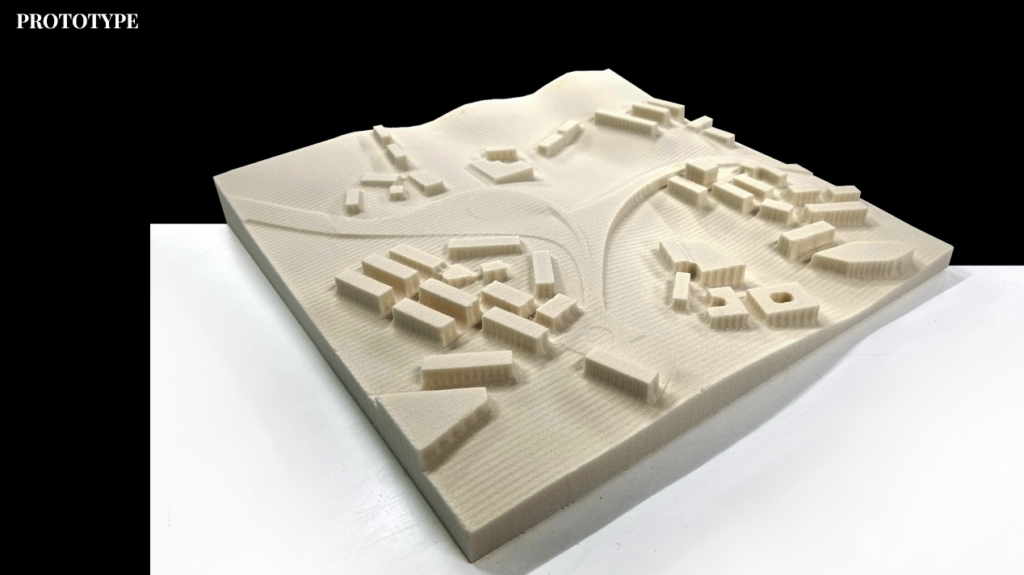
TECHNIQUE 2 | 3D PRINTING
The main challenges during this exercise can be summarized in four main ones:
a) Size of the model exceeds the max surface allowed by the machine which is 200×200 mm
b) Granularity of the Voronoi cells. it might be messed up in the case of tiny cells on the printed scale.
c) Cells with voids. In the case of a ratio void-pathway width that is very low, there is a risk of a structurally weak cell.
d) Intersection between the cells, as it is a Voronoi divided surface, there is a need in increasing wall thickness to create solid joints and common surfaces.


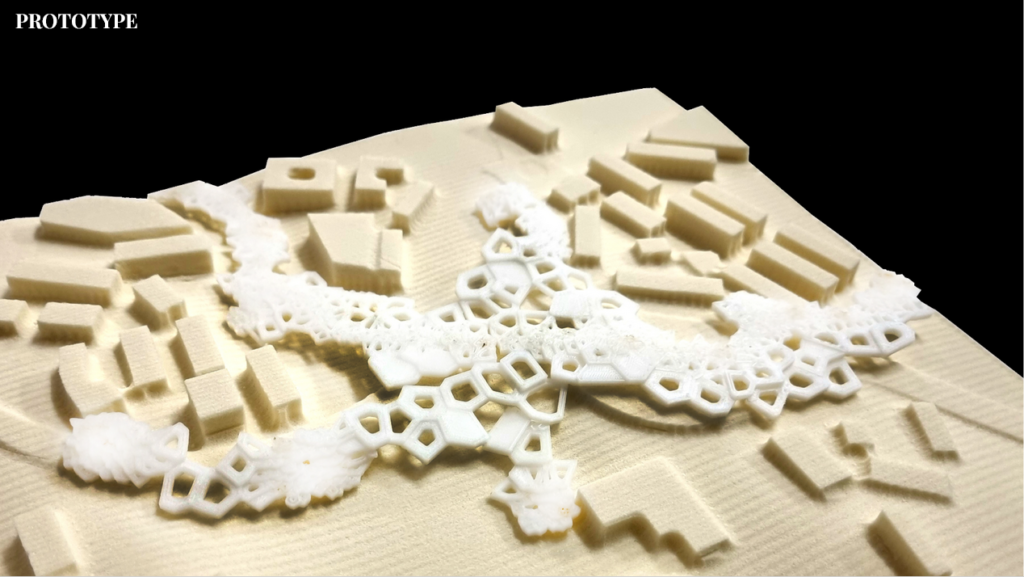
TECHNIQUE 3 | VIDEO MAPPING
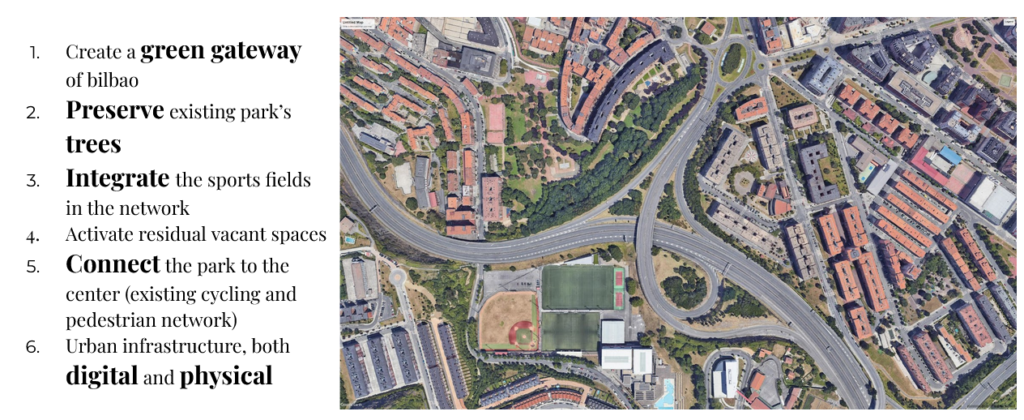
The video mapping of the model showed the Eskurtze Park in Bilbao and its transformative design process from the status of Barely a park to Bilbao’s regional gateway.


